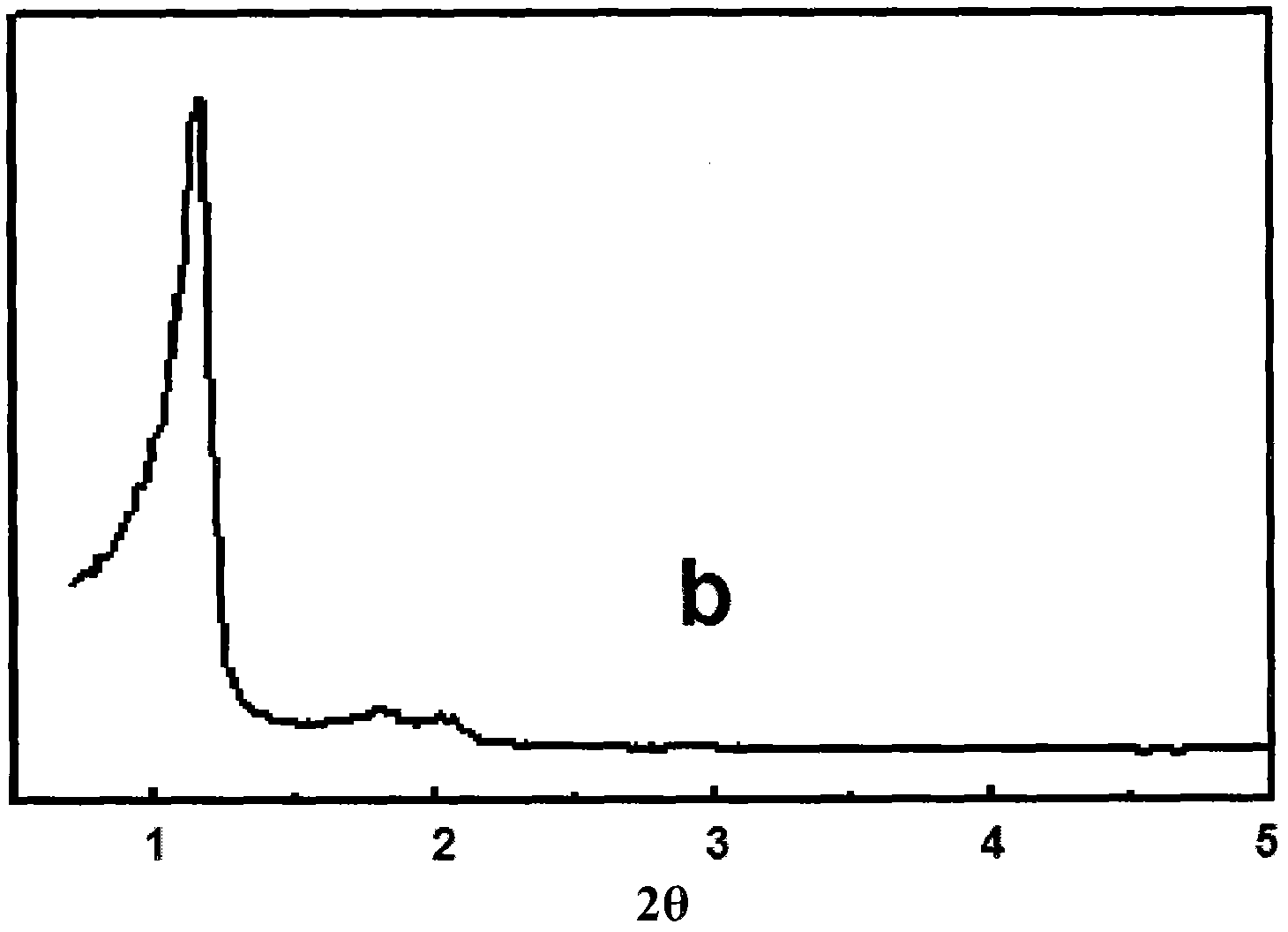Olefin polymerization method
An olefin polymerization and olefin technology, applied in the field of olefin polymerization, can solve problems such as low efficiency and low catalytic efficiency, and achieve the effects of good mechanical strength, reduced production cost, high polymerization efficiency or catalytic efficiency
- Summary
- Abstract
- Description
- Claims
- Application Information
AI Technical Summary
Problems solved by technology
Method used
Image
Examples
Embodiment approach
[0058] According to a preferred embodiment of the present invention, the preparation method of the supported metallocene catalyst comprises:
[0059] In the first step, the triblock copolymer polyethylene glycol-polyglycerol-polyethylene glycol and ethanol are added to the buffer solution of acetic acid and sodium acetate with a pH value of 1-6, at a temperature of 10-60°C Stir until dissolved;
[0060] In the second step, trimethylpentane is added to the solution obtained in the previous step, and stirred at a temperature of 10-60° C. for 1-20 hours;
[0061] Step 3, add tetramethoxysilane to the solution obtained in the previous step, and stir at a temperature of 10-60°C for 10-72 hours;
[0062] In step 4, the solution obtained in the previous step is placed in a closed reaction vessel, and crystallized at a temperature of 30-150° C. for 10-72 hours;
[0063] Step 5, filtering, washing and drying the crystallized product to obtain the hollow spherical mesoporous material ...
preparation example 1
[0080] This preparation example is used to prepare the supported metallocene catalyst used in the olefin polymerization method according to the present invention.
[0081] 1.0 gram of three-stage copolymer polyethylene glycol-polyglycerol-polyethylene glycol (purchased from Aldrich, brand P123) and 1.69 gram of ethanol are added in the buffer solution of acetic acid and sodium acetate of pH=4.4 of 28ml, Stir at 15°C until polyethylene glycol-polyglycerol-polyethylene glycol is completely dissolved, then add 6g of trimethylpentane to the above solution, stir at 15°C for 8 hours, then add 2.13 grams of tetramethylpentane Add oxysilane to the above solution, stir at 15°C for 20 hours, transfer the solution to a polytetrafluoroethylene-lined reactor, crystallize at 60°C for 24 hours, filter, wash with distilled water, and dry to obtain a hollow Spherical mesoporous silica raw powder.
[0082] The hollow spherical mesoporous silica raw powder was calcined in a muffle furnace at 55...
Embodiment 1
[0096] This example serves to illustrate the olefin polymerization process according to the present invention.
[0097] In a 2-liter stainless steel autoclave, replace three times each with nitrogen and ethylene, then add 200 ml of hexane, raise the temperature of the kettle to 80 ° C, then add 800 ml of hexane, and add 2 ml of hexane with the addition of hexane The concentration is 1 mol / liter triethylaluminum (TEA) hexane solution, then add 85.5 mg MAO / MS-GJ-BU-1, feed ethylene, raise the pressure to 1.0MPa and maintain it at 1.0MPa, in React at 70°C for 1 hour. Obtain 412 grams of polyethylene particle powder, the bulk density (BD) of this polyethylene particle powder is 0.323g / ml, melt index MI 2.16 = 0.005 g / 10 min. It was determined by calculation that the efficiency of the catalyst was 4819g PE / gcat h (ie, 2×10 8 g PE / (mol Zr h)).
PUM
| Property | Measurement | Unit |
|---|---|---|
| diameter | aaaaa | aaaaa |
| specific surface area | aaaaa | aaaaa |
| pore size | aaaaa | aaaaa |
Abstract
Description
Claims
Application Information
 Login to View More
Login to View More - R&D Engineer
- R&D Manager
- IP Professional
- Industry Leading Data Capabilities
- Powerful AI technology
- Patent DNA Extraction
Browse by: Latest US Patents, China's latest patents, Technical Efficacy Thesaurus, Application Domain, Technology Topic, Popular Technical Reports.
© 2024 PatSnap. All rights reserved.Legal|Privacy policy|Modern Slavery Act Transparency Statement|Sitemap|About US| Contact US: help@patsnap.com










